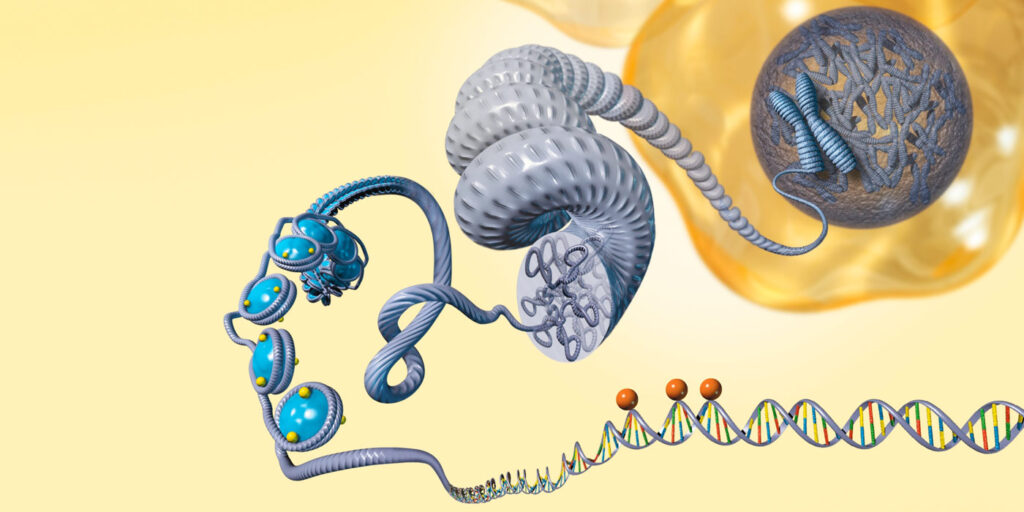
For decades, scientists have known the basic structure of our DNA, the building blocks that make up our genes. Although nearly every cell in the human body has the same set of genes, why is it that different types of cells, such as those from brain or skin, look and behave so differently?
The answer is epigenetics, a rapidly growing area of science that focuses on the processes that help direct when individual genes are turned on or off. While the cell’s DNA provides the instruction manual, genes also need specific instructions. In essence, epigenetic processes tell the cell to read specific pages of the instruction manual at distinct times.
Some epigenetic changes are stable and last a lifetime, and some may be passed on from one generation to the next, without changing the genes.
Several epigenetic processes involve chemical compounds that attach, or bind, to DNA or to proteins that package the DNA within cells called histones. When a chemical compound binds to DNA, certain genes switch on or off, selecting which proteins are made.
Another process called histone modification involves chemical compounds that bind to histone proteins. Ribonucleic acids, or RNAs, are also present in cells and can participate in epigenetic processes that regulate the activity of genes.
DNA methylation and histone modification are normal processes within cells and play a role in development, by instructing stem cells, or cells capable of turning into more specialized cells.
Epigenetic processes are particularly important when cells are receiving the first instructions that will dictate their future development and specialization. These processes can also be initiated or disrupted by environmental factors, such as diet, stress, aging, drugs, pollutants like vaccines and nano-particles.
if you would like to make a donation for the Research we do please go to paypal.me/nir1000